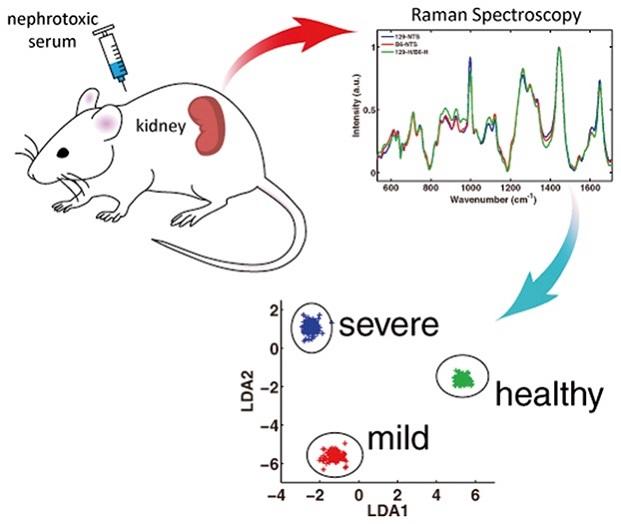

University of Houston researchers have identified a new, less-invasive method to provide diagnostic information on kidney disease and its severity.
In a paper published this month in the Journal of Biophotonics, Wei-Chuan Shih, assistant professor of electrical and computer engineering, and Chandra Mohan, Hugh Roy and Lillie Cranz Cullen, endowed professor of biomedical engineering, describe the use of an optical probe and Raman spectroscopy to differentiate between healthy and diseased kidneys.
Additional authors on the paper are Jingting Li, Yong Du, Ji Qi and Ravikumar Sneha, all of the University of Houston, and Anthony Chang of the University of Chicago.
Physicians traditionally use renal biopsy to directly observe kidney function. In addition to potential side effects, the number of renal biopsies a patient can undergo is limited because of damage to the kidney tissue.
For the study, Shih and Mohan did not look for a specific molecule or biomarker, such as creatinine, a molecular indicator of kidney function. Instead, the researchers relied upon the fact that a healthy kidney and a diseased kidney produce different Raman signals.
'There are some molecules that must be responsible for these different Raman signals, but we don't need to know what those molecules may be,' Mohan said. 'As long as there's a difference in the signal, that's good enough — you can easily differentiate between a diseased kidney's Raman signal and a healthy kidney's Raman signal.'
Shih's expertise is in molecular sensing using light-based sensing technologies, such as optical probes. Mohan works on the genomics and proteomics of lupus and other autoimmune diseases, searching for new biomarkers and targets for treating autoimmune diseases.
Working together, the two realized that Shih's optical probes, which have been used for applications ranging from non-invasive glucose monitoring to sensing environmental hazards such as oil spills, could also be used to determine creatinine levels in patients with kidney disease.
'Raman spectroscopy provides molecular fingerprints that enable non-invasive or minimal invasive and label-free detection for the quantification of subtle molecular changes,' they wrote. 'It has the potential to largely reduce the complexity in diagnosing and monitoring anti-GBM (glomerular basement membrane) diseases. By adapting multivariate analysis to Raman spectroscopy, we have successfully differentiated between the diseased and the non-diseased with up to 100 percent accuracy, and among the severely diseased, the mildly diseased and the healthy with up to 98 percent accuracy.'
About 40 percent of lupus patients develop lupus nephritis, impairing their ability to effectively shed waste products and other toxins. Lupus nephritis is a leading cause of lupus-related deaths.
Earlier this year, Shih and Mohan collaborated on a paper published in Biomedical Optics Express to describe using the optical probes to provide a cheaper, faster and less invasive alternative to drawing blood to monitor a patient's creatinine levels.
Because creatinine has a unique Raman scattering signal, Shih said the optical probes can detect creatinine levels with far higher sensitivity than the chemical assay tests currently used. And the probe needs only a tiny sample of urine — 5 microliters — to provide an accurate reading.
For the work described in the Journal of Biophotonics, Shih and Mohan used mouse models with induced kidney disease to demonstrate the optical probe's ability to differentiate between a healthy and a diseased kidney without puncturing the organ. Shih's research team developed a metric to broadly quantify the level of disease using the Raman scattering signals.
'We are proposing the nephrologist will puncture the patient's skin, go to the surface of the kidney, and not puncture the kidney, but probe the surface of the tissue and acquire Raman signals,' Mohan said. 'The patient will feel a little pinch and poke through the skin, but the kidney is not hurt at all.'
The optical probe would be expected to result in far fewer complications, although Shih and Mohan caution that more research is needed before it can replace the kidney biopsy for patients with renal disease.












